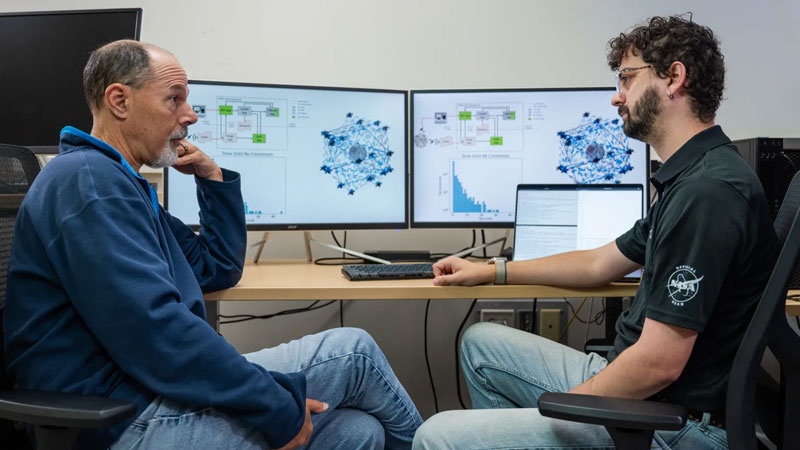The new and recently tested NASA technology, by a distributed automatic curely control, many satellites in general terms can be described by the slogan “Communicate, be on the same wave and work together to complete the work!”. This approach allows separate spacecraft to make independent decisions, collaborating with each other to achieve common goals and all this without human participation.

Image source: NASA
DSA technology (Distributed SpaceCraft autonomy) was tested on a small scale in space in the orbit of the Earth and in a slightly larger laboratory of NASA. Cosmos tests were carried out from August 2023 to May 2024 (four NASA Starling cubes were launched by Rocket Lab Electron missile in July 2023). Stand trials on Earth are conducted for about two years, and their scale is gradually expanding. Together, these two approaches allowed NASA to advance in the creation of distributed computing power for satellite groups.
In the orbit of the Earth, four cubes for the first time autonomously conducted a scientific study of the ionosphere. The software did not contain a detailed work plan – each of the satellites independently made decisions on the correction of the orbit, exchanging data with other devices in ROE. Satellites received GPS signals and evaluated their delays, which changed depending on the density and condition of the planet ionosphere. Based on the collected data, as well as their exchange between devices, each satellite formed his own study, the results of which was shared with the rest. Together they planned further steps.
In the NASA laboratory, researchers have collected an imitation of swarming of the switches in the server rack using the on -board computers of the cubes. This swarm was tested under the simulated conditions of a low and high near -moon orbit. The system faced the tasks of creating a distributed network to provide navigation services in the near -moon space and on the surface of the moon, as well as coordination of time on satellites (low gravity forces the clock on the moon “tick” faster). Modeling showed that the automatic system for distributing tasks in the swarm group without human participation successfully copes with the management of 60 satellites. At the next stage, NASA plans to increase their number to 100 and continue to build up the group.
«The technology of distributed autonomy of spacecraft is really unique, – the agency explains. “The software gives the satellite swarm by the scientific task and“ reason ”for its implementation.” In the future, the number of satellites will be too large for control by operators, and it is better to prepare for this in advance.